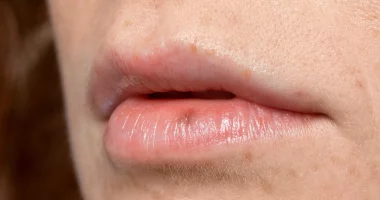Chronic daily headaches are defined as having headaches for 15 days or more per month over a period of at a minimum three months. These persistent headaches may be caused by various conditions like migraines and tension headaches. They can significantly impact daily life, becoming debilitating and interfering with everyday activities for both adults and children.
While occasional headaches might be a minor inconvenience and often relieved with over-the-counter pain treatment, chronic headaches need a more comprehensive approach. Treatment options for chronic headaches include acupuncture, medications, and talk therapy. Managing these frequent headaches effectively is crucial to enhancing quality of life and decreasing their impact on daily functioning.
Types
The word “chronic daily headache” covers several kinds of headaches that happen every day. Here are the main kinds:
- Tension Headache: This type feels like a tight band is wrapped over your head. It’s often described as a steady, dull pain.
- Cluster Headache: These headaches come in groups or clusters, meaning they may occur several times a day over weeks or months. The pain is usually severe and is often felt on one side of the head, particularly around or behind the eye.
- Migraine: Migraines are intense, pulsate headaches that can affect one or both sides of your head. They may be accompanied by symptoms known as an aura, which can include visual disturbances or other sensations before the headache starts.
- Hemicrania Continua: This is a constant headache that affects one part of your head. It can feel the same as a migraine but doesn’t go away and is present every day.
- NDPH (New Daily Persistent Headache): This type starts suddenly and continues to occur every day. It lasts for months without easing up.
Symptoms
The constant headache symptoms can differ depending on the kind of headache you have. Generally, the head pain can affect one or both sides of your head and may feel like a throbbing, pulsing, or tightening sensation. The intensity of the pain can range from mild to serious.
In addition to the primary headache pain, other symptoms may also occur. These can include sweating, a sick feeling of stomach or vomiting, and heightened sensitivity to sounds, lights, or smells. You might also experience a stuffy or runny nose, redness or tearing of the eyes, light-headedness, or a feeling of agitation or restlessness. Recognizing these symptoms can help in detecting the kind of headache and determining the most effective treatment.
Causes
Healthcare providers are still uncertain about the exact causes of daily headache signs. However, several factors might contribute, either alone or in combination:
- Muscle Tension: Tension in the head and neck muscles can cause discomfort and cause headache pain. Tight muscles can contribute to the development of tension-type headaches.
- Trigeminal Nerve Activation: A major nerve in the face and head, plays a crucial role in directing sensory information to the brain. When this nerve is activated, it can cause various kinds of headaches.
- Hormonal Changes: Fluctuations in hormone levels, like estrogen, are linked to certain headaches. For instance, modifications in estrogen levels are thought to be a factor in the higher incidence of migraines among females.
- Genetics: While more study is needed, genetics may influence an individual’s likelihood of experiencing particular kinds of headaches, especially migraines.
In addition to these potential causes, headaches are often triggered by various environmental or lifestyle factors. These can include stress, absence of sleep, missing meals, physical strain, modifications in weather, and the use of alcohol or caffeine. Feelings of depression or anxiety and certain medicines can also play a role.
It’s important to note that overusing pain medication can lead to a specific type of headache known as a rebound headache or medication overuse headache. This occurs when suggested or OTC pain medications are used over three days a week.
Diagnosis
To diagnose headaches, you will first consult with a primary care healthcare provider who will review your symptoms and medical history. If needed, you may be referred to a neurologist, a specialist in nervous system disorders.
The diagnostic process begins with a thorough medical history. Your healthcare provider will ask questions to understand your headache patterns and symptoms. For instance, they might inquire about the frequency and duration of your headaches, the location and type of pain, and any associated symptoms. They will also want to know if your headaches occur at specific times or after certain activities and whether you have a family history of headaches like migraines. Additionally, your healthcare provider will ask about any current medications you are taking.
Following the medical history, a physical examination is conducted. In most cases, laboratory tests are not required unless there are symptoms suggestive of an infection or another underlying condition. During the physical examination, the healthcare provider aims to eliminate secondary causes of headaches, which can include infections such as encephalitis or meningitis, obstructive sleep apnea, seizures, brain tumors, traumatic brain injury, or contact with toxic substances.
In some instances, imaging tests like MRIs or CT scans may be used to help identify the underlying cause of your headaches and assist in making an accurate diagnosis.
Treatment
Treating constant headaches involves a variety of approaches, tailored to the type of headache you have. A healthcare provider will help determine the most effective treatment plan for your specific condition.
Medications
Medications are a common intervention for constant headaches. They can either prevent headaches from occurring or address them when they do. If overuse of prescription pain medications is contributing to your persistent headaches, your healthcare provider may suggest stopping these medications to break the cycle of headaches.
Preventive treatments aim to reduce the frequency of headaches, which can reduce the reliance on pain medications. Examples of preventive medications involve:
- Antidepressants: Tricyclic antidepressants like nortriptyline and amitriptyline can prevent headaches and also assist in managing linked anxiety or depression.
- Antiseizure Medications: Drugs like gabapentin and topiramate can help prevent headaches.
- Beta-Blockers: Medications such as propranolol and metoprolol are often used to prevent headaches.
- Botox Injections: Botox, a neurotoxin made from the bacteria that lead to botulism, can be used for headache prevention, particularly if daily medication isn’t tolerated.
- Monoclonal Antibodies: These include drugs like erenumab, fremanezumab, eptinezumab, atogepant, and rimegepant, which are used to prevent migraine attacks. Galcanezumab is also used for preventing cluster headaches and migraine attacks.
- Mood Stabilizers and Calcium Channel Blockers: Verapamil and lithium can help prevent cluster headaches.
Non-medication therapies
Non-medication therapies can also be beneficial and may be used alongside medications:
- Biofeedback: This technique involves using observing devices to help control body functions like blood pressure and muscle tension.
- Therapy: Individual or group therapy with a mental health professional can help address the emotional impact of headaches and develop coping strategies.
- Nerve Stimulation: Electrical impulses can be used to activate specific nerves. Stimulation of the occipital nerve may assist with migraines, while stimulation of the vagus nerve can aid in treating cluster headaches.
- Massage: It can help reduce muscle tension and promote relaxation.
- Acupuncture: This includes inserting tiny needles into certain points on the body to alleviate headache symptoms.
- Supplements: Herbs like butterbur and feverfew may decrease the frequency of attacks of migraine.
Your healthcare provider can help you explore these options to find the best approach for managing your headaches effectively.
Risk Factors
Researchers believe that chronic headaches often develop when an episodic headache disorder becomes persistent. Although the exact mechanisms for this transformation are not fully understood, certain risk factors are thought to contribute to the shift from occurring to persistent headaches.
Key risk factors include the overutilizing of pain treatment, which can lead to rebound headaches. Obesity is another risk factor, as it can influence various physiological processes that contribute to headache development. Disturbed sleep patterns can also play a significant role, as inadequate rest can exacerbate headache frequency and intensity. Additionally, high caffeine consumption and continuous high-stress levels are linked to an increased risk of chronic headaches. Addressing these risk factors may help in managing and potentially preventing the progression of headache disorders.
Summary
Chronic daily headaches, which occur for 15 days or more per month, can stem from various types like migraines, tension headaches, hemicrania continua, cluster headaches, and new daily persistent headaches. Causes include trigeminal nerve activation, changes in hormones, muscle tension, and genetics, with lifestyle factors like poor sleep and stress contributing. Treatment options range from medications and Botox to non-medication therapies like therapy, biofeedback, and acupuncture. Diagnosis involves a detailed medical history, physical examination, and possibly imaging tests to rule out secondary causes. Effective management often requires a combination of treatments and lifestyle adjustments.





